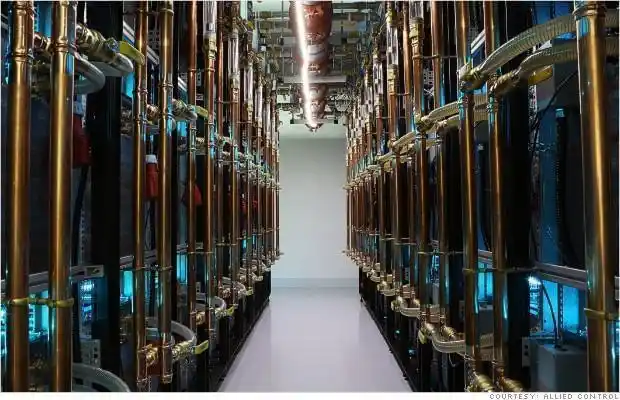In the rapidly evolving world of cryptocurrency, miners continuously seek cutting-edge tools to maximize their earnings and efficiency. Litecoin, often dubbed the silver to Bitcoin’s gold, remains a formidable player in the digital currency landscape in 2023. As demand surges, the quest for the best Litecoin mining hardware intensifies, blending raw computational power with energy efficiency and durability. The right mining rig can mean the difference between profitability and redundancy in the competitive arena of Litecoin mining.
Litecoin relies on the Scrypt algorithm, distinguishing it from Bitcoin’s SHA-256, necessitating specialized mining equipment that can tackle Scrypt’s memory-intensive characteristics. Unlike Bitcoin’s ASIC giants that dominate SHA-256 mining, Litecoin mining hardware must balance fast hash rates with efficient memory handling. For miners looking to dive into or expand their presence in LTC mining, assessing the hardware landscape means weighing hash speed, power consumption, initial cost, and long-term reliability.
Currently, among the most sought-after miners is the Innosilicon A6+ LTCMaster. This beast of a miner can churn out an impressive 2.2 GH/s at approximately 2100 watts of power consumption. While its appetite for electricity might raise eyebrows, its computational output counters the energy expenditure, securing steady yields in a market where difficulty levels and network hash rates fluctuate unpredictably. The A6+ LTCMaster exemplifies the new wave of ASIC miners tailored to Litecoin’s unique mining requirements.

Not to be overshadowed, the Bitmain Antminer L7 emerges as a powerhouse for 2023’s Litecoin scene, boasting spectacular hash rates clocking in at 9.5 GH/s, though at 3425 watts the energy draw is formidable. Bitmain’s reputation in manufacturing some of the most reliable Bitcoin miners naturally extends into Scrypt-based devices. The Antminer L7 is a testament to innovation thriving on the edge of performance and power optimization, appealing primarily to large-scale mining farms prepared for significant upfront investments.
The surge in hardware innovation also brings with it enhanced hosting solutions. Mining machine hosting services are gaining ground, especially for miners who seek to circumvent the hassle of physical maintenance and electricity costs. Hosting providers offer secure, climate-controlled environments with high-speed connectivity, essential for machines like the Antminer L7 and A6+ LTCMaster that demand stable operational conditions to avoid downtime and hardware degradation. For many, hosting transforms mining from a labor-intensive task into a scalable, efficient enterprise.
Meanwhile, smaller miners and enthusiasts are exploring hybrid approaches—utilizing both hosting services and home mining setups using rigs like the FusionSilicon X7, which strikes a better energy-to-performance balance with 2.5 GH/s hash power and a 2200-watt consumption. This flexibility empowers individuals to participate actively in LTC mining without committing solely to capital-heavy, industrial-scale farms.
Of course, the profitability of mining Litecoin hinges not just on hardware but also on the broader crypto ecosystem—network difficulty, block rewards, and market price volatility are major variables. Exchange platforms play a critical role here, facilitating seamless LTC trading and allowing miners to liquidate their rewards swiftly or hold for speculative gains. Platforms with robust liquidity and low fees provide miners the agility to respond to market shifts, turning their mining rigs into dynamic financial instruments.
Mining farms, the colossal fortresses of computational might, continue to dominate, leveraging economies of scale that smaller operations cannot match. These farms often diversify their portfolios, mining multiple Scrypt-based coins or including Ethereum and Bitcoin miners to hedge against fluctuating profit margins. The interconnectedness of these currencies and their respective mining rigs underpins an ecosystem where innovation in hardware and hosting intertwines with strategic financial maneuvers.

As 2023 progresses, the tightrope walk between efficiency and power consumption intensifies. Emerging trends hint at the integration of AI-driven optimization tools within mining rigs, where real-time adjustments in processing power and energy use could revolutionize mining operations. The convergence of software intelligence and hardware sturdiness promises a new era, where miners can unlock unparalleled performance while curbing environmental footprints.
Ultimately, the best Litecoin mining hardware for 2023 is not a one-size-fits-all answer, but a synthesis of capability, cost, energy efficiency, and operational context. Whether you’re an individual miner deploying rigs in your basement, a savvy entrepreneur leveraging mining hosting services, or an industrial-scale farm operator, aligning hardware choices with strategic goals is paramount. Litecoin remains a vibrant slice of the cryptocurrency pie, and mastering the art and science of mining hardware selection will ensure your stake in this digital frontier remains fruitful and forward-looking.
This article dives into 2023’s top Litecoin mining rigs, blending hardware specs with energy tips and market insights, offering unpredictable gems for novice miners while hinting at crypto’s evolving eco-challenges!